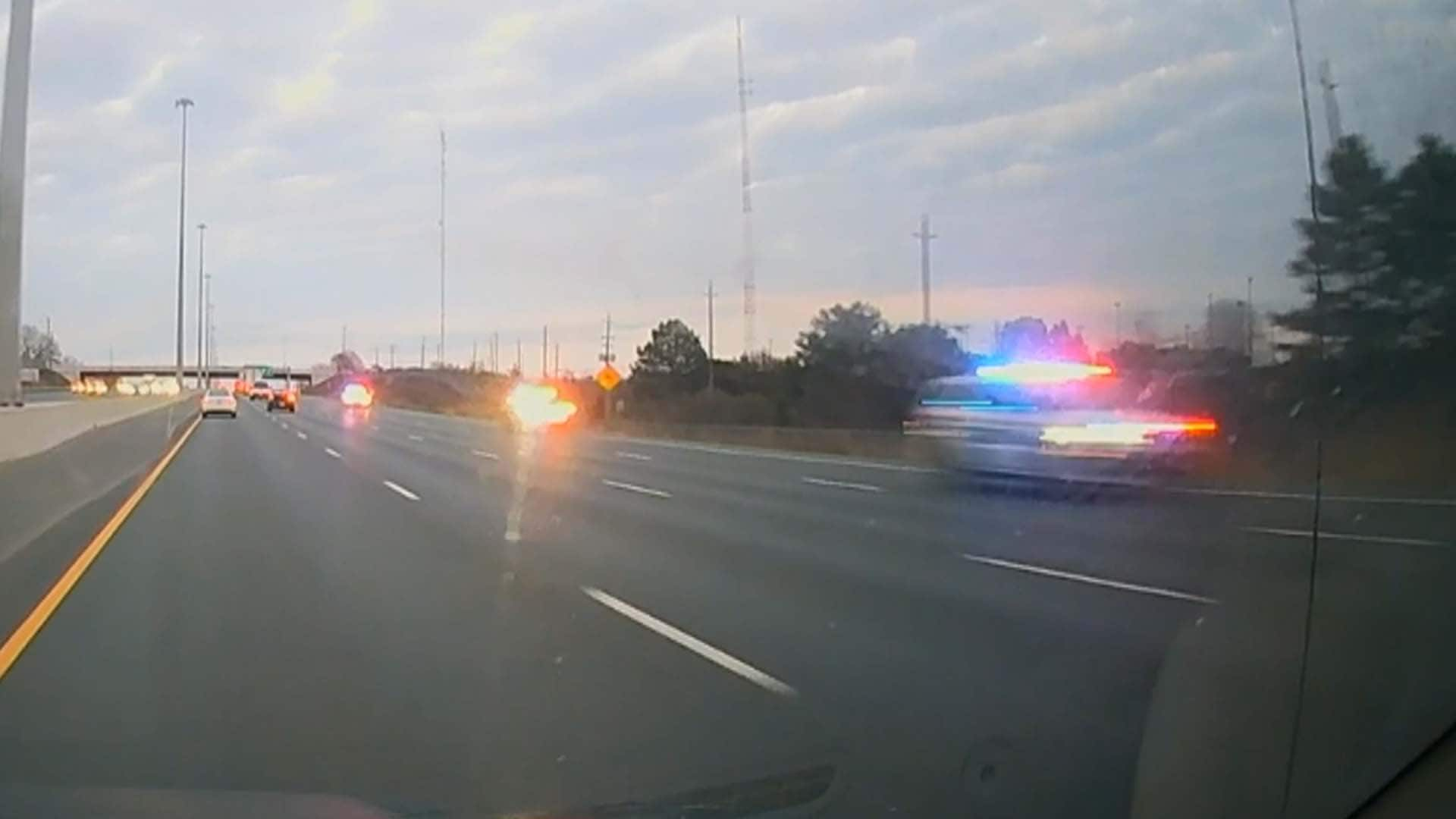The recent deadly crash near Toronto — in which four people were killed after police chased a suspect through oncoming traffic on a major highway — highlights the challenges officers face when deciding whether to pursue a suspect.
But it also raises questions about whether the policies covering police chases need to be beefed up, and if officers are sufficiently trained when confronted with these incidents.
“If you’re a cop and you’ve got to apply this balancing test in the heat of the chase, you’re being asked to make ridiculously complex decisions in a very heated and stressful situation,” said Geoffrey Alpert, a professor of criminology at the University of South Carolina, who specializes in high-risk police activities.
The recent collision was the result of a police chase that began with an alleged liquor store robbery in Bowmanville, Ont. Police pursued the suspect as he drove the wrong way on Highway 401 in Whitby, about 50 kilometres east of Toronto.
The crash involved at least six vehicles, according to Ontario’s Special Investigations Unit, the police watchdog which is investigating. The suspect was also killed.
Provincial legislation lays out the circumstances in which a police officer can purse a fleeing suspect in a vehicle.
New dashcam video shared with CBC News is painting a clearer picture of a wrong-way police chase on Highway 401 that ended in tragedy.
In Ontario, for example, an officer must consider a three-part test.
The officer must believe a criminal offence has been, or is about to be, committed and that pursuit is necessary for identifying the vehicle or a person, Steve Summerville, a former Toronto police officer and Ontario Police College instructor, told CBC’s Metro Morning.
Secondly, the officer must determine that there are no alternatives. And lastly, the officer must conclude that, in order to protect public safety, the immediate need to apprehend or identify the person outweighs the risk to public safety.
“The officer involved has to make a ton of decisions at the time and assess things in a split second,” Jeff McGuire, executive director of the Ontario Association of Chiefs of Police, also told The Current.
If officers begin a pursuit, they must notify their communications centre or dispatch. Then, the police service is required to have a supervisor monitor the pursuit.
Another Footage Of Crash On📍Hwy401 Near Hwy412 In Whitby,ON <br>.<br>Via: ( <a href=”https://twitter.com/Durham?ref_src=twsrc%5Etfw”>@durham</a>.meets2 )<a href=”https://twitter.com/hashtag/Hwy401?src=hash&ref_src=twsrc%5Etfw”>#Hwy401</a> <a href=”https://twitter.com/hashtag/Whitby?src=hash&ref_src=twsrc%5Etfw”>#Whitby</a> <a href=”https://twitter.com/hashtag/durham?src=hash&ref_src=twsrc%5Etfw”>#durham</a> <a href=”https://twitter.com/hashtag/ONHwys?src=hash&ref_src=twsrc%5Etfw”>#ONHwys</a> <a href=”https://twitter.com/hashtag/Onpoli?src=hash&ref_src=twsrc%5Etfw”>#Onpoli</a> <a href=”https://twitter.com/hashtag/accident?src=hash&ref_src=twsrc%5Etfw”>#accident</a> <a href=”https://twitter.com/hashtag/traffic?src=hash&ref_src=twsrc%5Etfw”>#traffic</a> <a href=”https://twitter.com/hashtag/policechase?src=hash&ref_src=twsrc%5Etfw”>#policechase</a> <a href=”https://twitter.com/hashtag/breakingnews?src=hash&ref_src=twsrc%5Etfw”>#breakingnews</a> <a href=”https://t.co/rtEMh8jehT”>pic.twitter.com/rtEMh8jehT</a>
—@401_da_sarpanch
“That supervisor has the autonomy — legislative authority — to call off, to terminate, the pursuit. And if that occurs, officers are duty-bound to comply,” Summerville said.
McGuire says he believes the current legislation is sufficient and adds that many police agencies usually impose more stringent policies than required by the legislation.
“Other than completely outlawing, making chases totally prohibited under any circumstance, I don’t think there needs to be tightening, in my opinion, on, legislation or policy,” McGuire said in a separate interview with CBC News, though he’s also open to looking for any potential gaps.
As for police training, McGuire says that in Ontario, recruits get 18 hours of training in vehicle operations, though that covers more than just pursuits. Most police services will give their officers additional vehicle training, he said.
But Christian Leuprecht, a professor of political science at Royal Military College of Canada, says he believes there’s too much emphasis on tactical training. There should be more scenario training, in which officers must decide under what circumstances they would want to engage in a pursuit and how they weigh the risks, he says.
“These are, like, classic issues where your heart wants to chase after the guy but your brain should have all sorts of red signals [to], stop right now.”
Four people are dead, including an infant and two grandparents, following a high-speed police chase going the wrong way on Highway 401 outside of Toronto. Witness video of the chase shows a cargo van speeding past traffic on the wrong side.
Finding data about police pursuits in Canada is challenging as each force keeps its own records. A study conducted by the Civilian Review and Complaints Commission for the RCMP found that 77 people died in police pursuits over a 10-year period ending in 2019. But that study was based on media reports and pursuits that failed to make the news were not included.
Still, Leuprecht says he believes there are fewer police chases these days because of increased awareness of the potentially deadly results. As well, there are alternatives to car chases, if the force has the resources, which include aerial pursuits and drones.
Getting the suspect to stop
Meanwhile, Alpert, at the University of South Carolina, says one of the big problems with pursuits is getting the suspect to stop.
“If you don’t want to stop, short of a deadly force application, you’re not going to stop,” he said.
The pursuit will also make the suspect focus on the police behind them, and not on the road in front, creating a dangerous situation, he says.
A study funded by the U.S. Department of Justice Office of Community Oriented Policing Services and the National Highway Traffic Safety Administration found that fatal crashes involving a police pursuit peaked at 455 in 2020, the highest since at least 2007 when there were 372.
A high-speed pursuit down the wrong way of Ontario’s busy Highway 401 that ended in tragedy is raising questions about police chases. The National’s Ian Hanomansing asks two former police officials to break down what goes into the decision to chase or call off a pursuit.
This led to a report by the Police Executive Research Forum (PERF), a national think-tank on policing standards which recommended police not to start a pursuit unless a violent crime has been committed and the suspect poses an imminent threat.
“A lot of this has to do with the new thinking in policing today, which is about proportionality,” Chuck Wexler, executive director of PERF, said when the report was released.
“It’s about the sanctity of life and balancing the risk to everyone. Police officers die in pursuits. Suspects die in pursuits and even citizens can be injured or die.”
Alpert, who chaired the working group that produced the report, says there are very few departments or agencies that don’t chase at all.
And that, with 18,000 departments across the U.S., there are are still some with very few restrictions and which don’t train their officers well.
“So cops will chase for anything. The better departments have limited the pursuits to violent crimes.
“It’s what’s the government interest in stopping someone. If you have a rape or robbery, you know, a violent, murder or something of a very violent nature, then the government interest is pretty high,” he said. “If you have a property crime or traffic. Then the government interest is very low and does not justify risk.”
Ontario Premier Doug Ford called Monday night’s deadly crash on Highway 401 “a tragedy.” He also told reporters his government is working to better equip police services, which includes the purchase of four new police helicopters.







